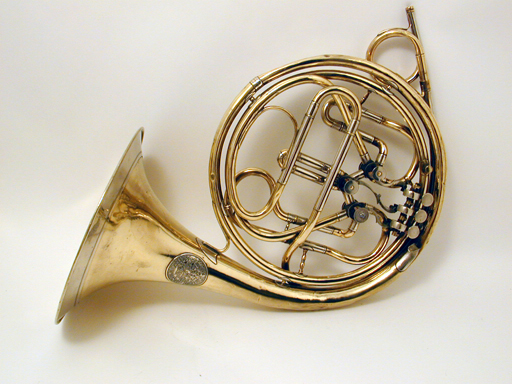
|

|
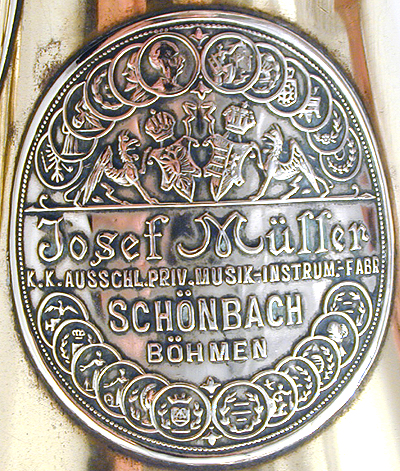
|
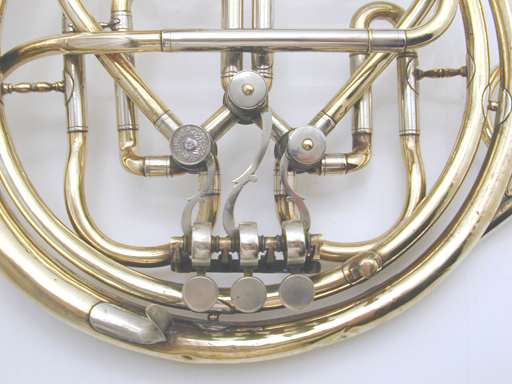
|
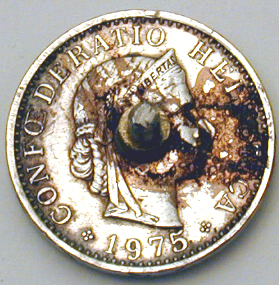
|
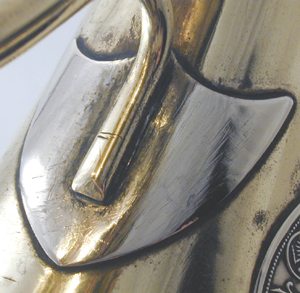
|
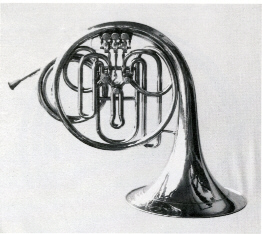
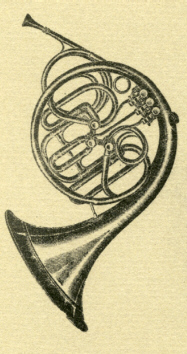
|
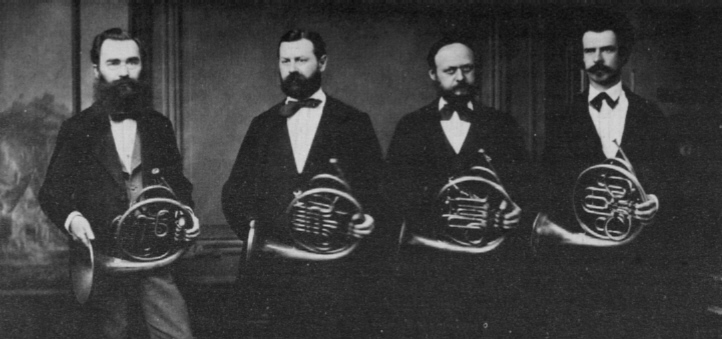
|
|
Label:
|
[circle medalion]Josef Müller |
|
|
Model:
|
Single | |
|
Serial Number :
|
(none) | |
|
Date of Manufacture:
|
ca. 1880 | |
|
Key(s):
|
E, (others by terminal crook) |
|
|
Valves:
|
3 rotary | |
|
Bore:
|
||
|
Mouthpipe Socket:
|
||
|
Bell Flare:
|
||
|
Bell Throat:
|
||
|
Bell Diameter:
|
||
|
Base Metal:
|
Brass, nickel-silver trim | |
|
Finish:
|
Raw Brass | |
|
Josef Andreas Müller (1850-1936) was the son of brass instrument maker,
Vincenz Müller in Schönbach, Bohemia (now Luby, Czech Republic). In 1873 he succeeded his father in the business and in 1880 extended it to include stringed instruments for which he patented several improvements. He was also accused of of counterfeiting Couesnon-model cornets. The family business flourished under his son, Josef, Jr., until after 1929. Exhibitions incude Eger (1881), Trieste (1882), Prague (1885), Paris (1889), and Vienna (1892).
The arrangement of rotary valves in a triangular pattern was not uncommon among horn makers in Bohemia and the vicinity of Vienna as an alternative to the Vienese pumpen valves. This innovation was no doubt an attempt to reduce the "acoustic resistance" due to the sharp angles of tubing found in the valve clusters of the Vienna horn and in-line rotary valves. Other examples of triangular valve arrangement are known by Josef Wolf, Prague; Leopold Uhlmann, Jr., Vienna; Josef Glassl, Graslitz; and Jos. Fotter, Mladá Boleslav, Bohemia. The modern Czech firm, M.Jiracek a synove, makes a similar F/Bb Double Horn (Model Nr.101 "Supin") with four rotary valves arranged in a square. "This unique design allows the airstream to pass through the valves unidirectionally - with acoustic resistance reduced incredibly."
|
||

|

|

|

|

|

|


|

|
References